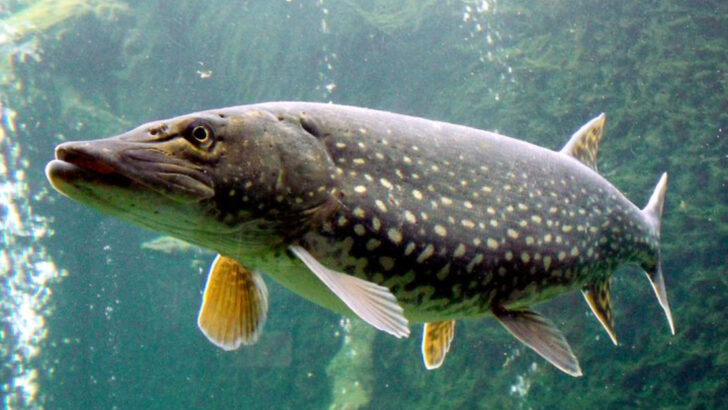Freshwater ecosystems are teeming with life, but lurking beneath their serene surfaces are some of the most formidable predators. These creatures have evolved to dominate their habitats, showcasing incredible adaptations that make them masters of their domains. In this list, we explore the biggest and most impressive freshwater predators, each with a unique story and a commanding presence in the wild.
Nile Crocodile

At the heart of Africa’s rivers, the Nile Crocodile reigns supreme. Known for its immense power and stealthy movements, this ancient predator can grow over 16 feet long. Its formidable jaw strength allows it to tackle a variety of prey, from fish to large mammals. With patience as its ally, the Nile Crocodile often lies in wait, blending seamlessly with its surroundings before launching a surprise attack. It’s a perfect example of nature’s balance of beauty and danger. Did you know? The Nile Crocodile can live up to 70 years in the wild.
Piranha
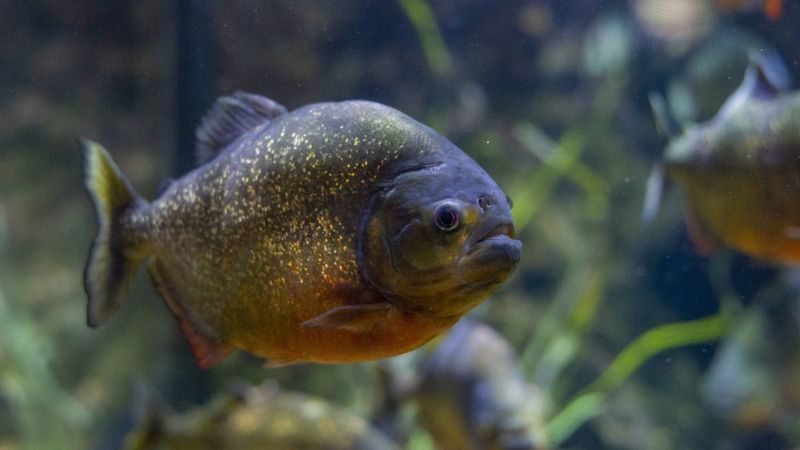
Few creatures spark as much intrigue as the Piranha. Found primarily in South America’s rivers, these fish are renowned for their sharp teeth and voracious appetite. While Hollywood often exaggerates their danger, Piranhas play a crucial role in their ecosystem, scavenging and controlling populations of other fish. Despite their fearsome reputation, they are typically shy and avoid large animals. Their rapid feeding frenzies, however, are a sight to behold. Fun fact: Piranhas communicate with each other through sounds made by their swim bladders!
Goliath Tigerfish
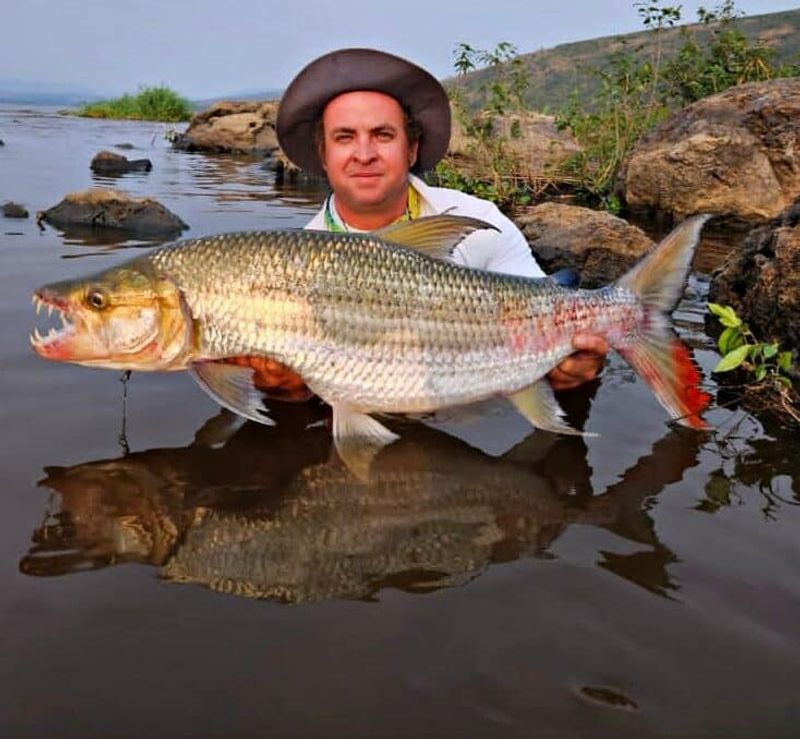
In the depths of the Congo River, the Goliath Tigerfish prowls with a fearsome reputation. With sharp, dagger-like teeth and a muscular body, this fish is a formidable hunter. It can reach lengths of over 5 feet and weigh more than 100 pounds. Known for attacking prey swiftly, it is often compared to a freshwater barracuda. Interestingly, local legends speak of its near-mythical status, with tales of fishermen battling these giants. The Goliath Tigerfish is not just a predator but a symbol of the untamed wild.
Alligator Gar
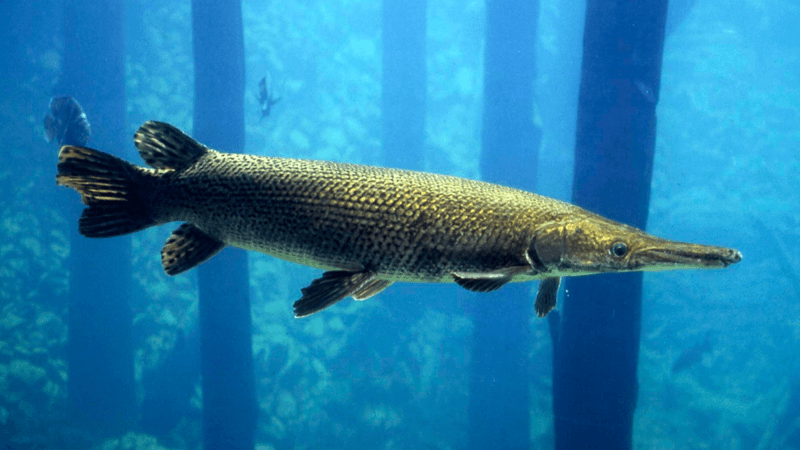
Bearing the name of its reptilian counterpart, the Alligator Gar is an impressive sight. Found in the slow-moving waters of the southern United States, this fish can grow up to 10 feet long. Its elongated snout and dual rows of sharp teeth make it an adept predator. Despite its fearsome appearance, the Alligator Gar is generally not aggressive toward humans. It is a living fossil, having existed for over 100 million years, showcasing the resilience and adaptability of nature’s designs.
Murray Cod
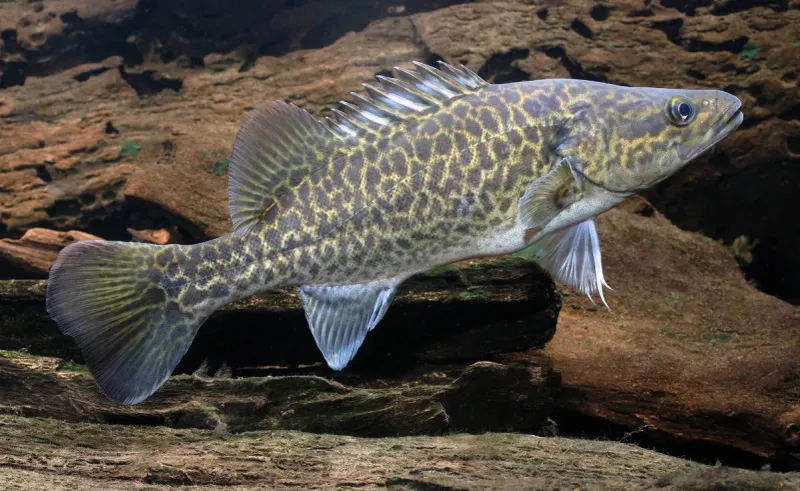
The Murray Cod is Australia’s largest freshwater fish, reaching lengths of over 4 feet. Residing in the Murray-Darling basin, this fish is a top predator in its habitat. Its mottled skin offers perfect camouflage against the riverbed, allowing it to ambush prey with remarkable efficiency. The Murray Cod’s diet includes fish, frogs, and crustaceans. Conservation efforts are underway to protect this iconic species, which holds cultural significance to Indigenous Australians. With its sheer size and cunning nature, the Murray Cod is a true river giant.
Payara (Vampire Fish)
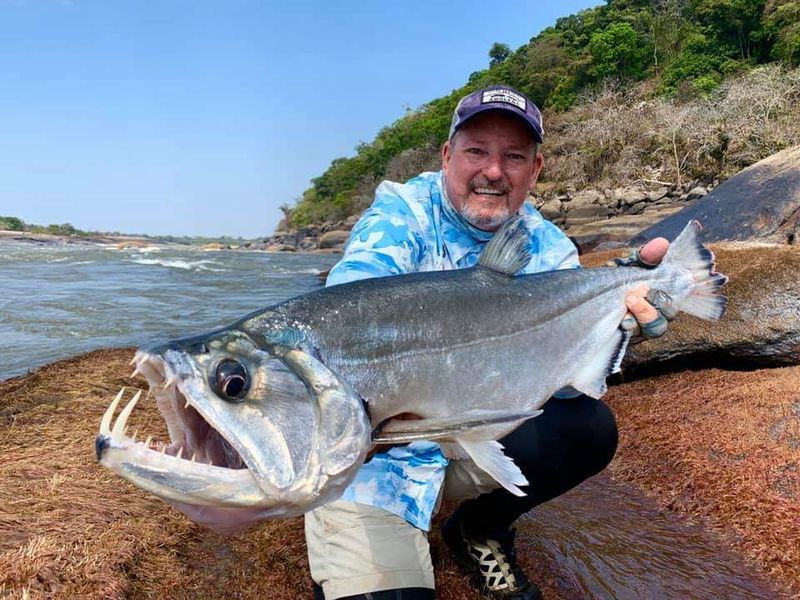
The Payara, often dubbed the Vampire Fish, is a terrifying hunter found in the Amazon basin. This fish is characterized by its long, sharp fangs that protrude from its lower jaw. Reaching up to 3 feet in length, the Payara preys on smaller fish, often impaling them with its dagger-like teeth. Its unique hunting method and appearance make it a subject of fascination and fear. Despite its menacing look, the Payara is an integral part of the river ecosystem, controlling fish populations and maintaining ecological balance.
Wels Catfish
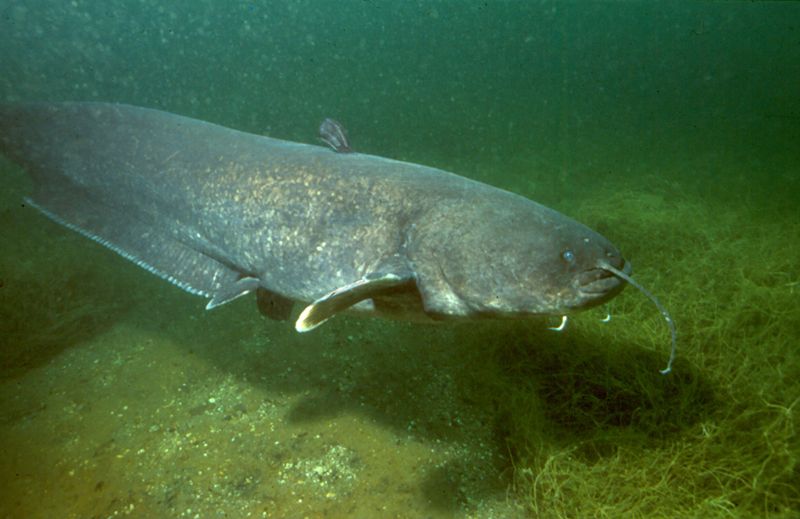
The Wels Catfish is a colossal predator inhabiting the rivers of Europe. Known for its massive size, it can grow over 9 feet long and weigh up to 660 pounds. Its broad mouth and sensory whiskers allow it to detect prey in dark, muddy waters. Despite its sluggish appearance, the Wels Catfish is an efficient hunter, consuming fish, amphibians, and even birds. This giant fish has intrigued anglers for centuries, often becoming the subject of local folklore. Its adaptability and sheer size make it a freshwater marvel.
Arapaima
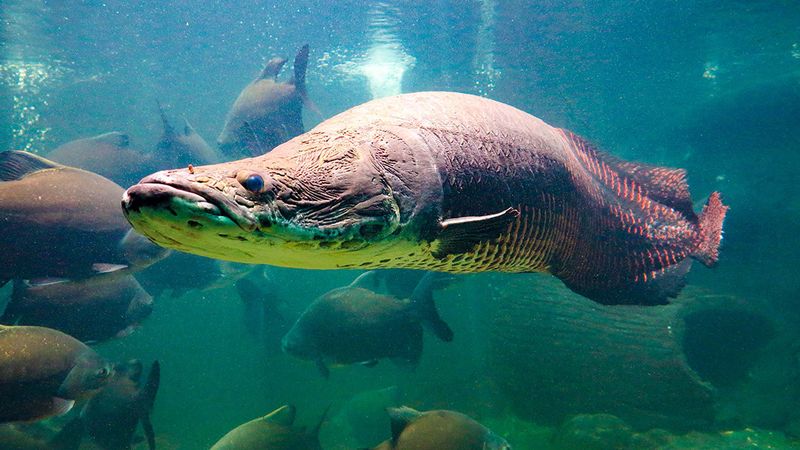
In the heart of the Amazon, the Arapaima stands out as one of the largest freshwater fish. Growing up to 10 feet long, it is a surface-dweller known for its ability to breathe air. This adaptation allows the Arapaima to thrive in oxygen-poor waters. Its diet consists of fish, invertebrates, and even small land animals. The indigenous people have revered this fish for centuries, utilizing its meat and scales. Conservation efforts focus on sustaining its populations, as it is both an ecological and cultural treasure.
Electric Eel

Despite its name, the Electric Eel is more closely related to catfish. Found in South America’s rivers, it generates powerful electric shocks to stun prey and deter predators. An adult can produce a shock of up to 600 volts, enough to knock down a horse. These eels can reach lengths of 8 feet, making them formidable hunters in their environment. Besides hunting, they use electricity for navigation and communication. The Electric Eel’s unique adaptations have fascinated scientists and inspired numerous research studies.
Bull Shark

The Bull Shark is renowned for its ability to thrive in both salt and fresh waters. Found in rivers around the world, it is an opportunistic predator, feeding on fish, birds, and even other sharks. Its adaptability is remarkable, allowing it to travel hundreds of miles upriver. With a robust body and aggressive nature, the Bull Shark commands respect among aquatic creatures. Conservation efforts aim to protect this vital species, highlighting its crucial role in maintaining ecological balance across diverse habitats.
Northern Pike
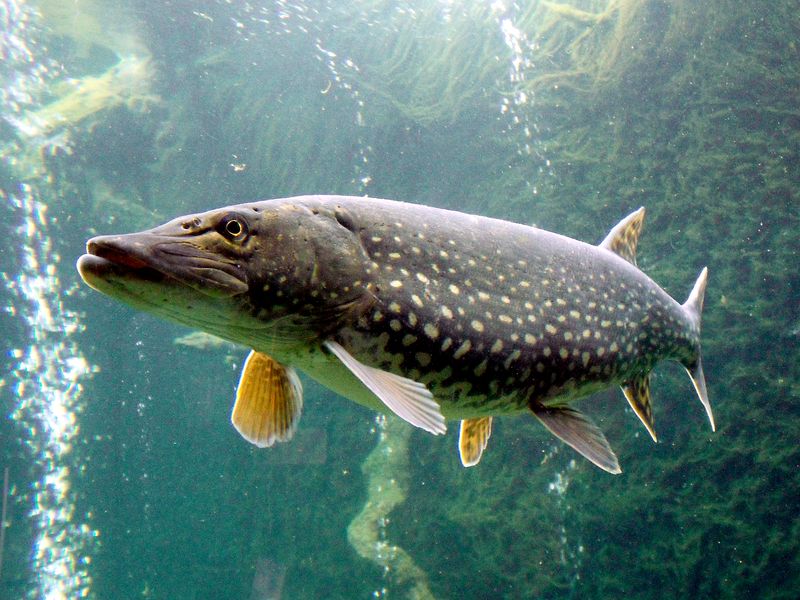
The Northern Pike, with its elongated body and sharp teeth, is a top predator in freshwater lakes and rivers across the Northern Hemisphere. Known for its ambush tactics, it hides among vegetation, waiting patiently before striking with lightning speed. This fish can grow over 4 feet long, preying on smaller fish and occasionally amphibians and birds. Its aggressive nature has earned it the nickname “water wolf.” The Northern Pike’s presence indicates a healthy ecosystem, making it a favorite among anglers and biologists alike.
Goonch Catfish

Known as the “demon fish” of the Indian subcontinent, the Goonch Catfish is a mysterious predator. Its immense size, reaching up to 6 feet, and powerful jaws make it a feared inhabitant of rivers like the Kali and Ramganga. Local legends often speak of its aggressive encounters with humans, though such tales remain largely anecdotal. Its diet primarily consists of fish, but it’s adaptable enough to consume larger prey. The Goonch’s elusive nature and sheer strength have captivated anglers, making it a prized catch in the angling world.
Green Anaconda
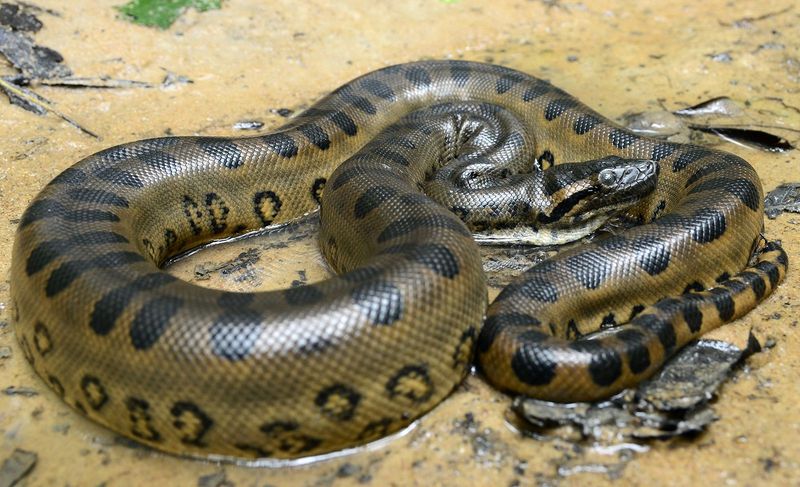
The Green Anaconda, the heaviest snake in the world, slithers through the waters of the Amazon basin. Capable of growing over 30 feet in length, it preys on a variety of animals, including fish, birds, and mammals. Using its immense strength, the anaconda constricts its prey, showcasing its prowess as an apex predator. Despite their fearsome reputation, these snakes are not aggressive towards humans unless threatened. Their role in the ecosystem is crucial, maintaining a balance within their habitat. Fun fact: Anacondas give birth to live young, unlike many other snakes.
Freshwater Stingray

In the rivers of South America, the Freshwater Stingray moves with an ethereal grace. Its flattened, disc-like body allows it to glide effortlessly across sandy riverbeds. Known for its sharp, venomous tail spine, this stingray is both beautiful and deadly. It preys on small fish and crustaceans, using its keen senses to detect hidden prey. Despite their potentially dangerous sting, freshwater stingrays are generally shy and avoid human interaction. Conservationists emphasize the need to protect their habitats, as these creatures are vital to the riverine ecosystems.
Giant Freshwater Whipray
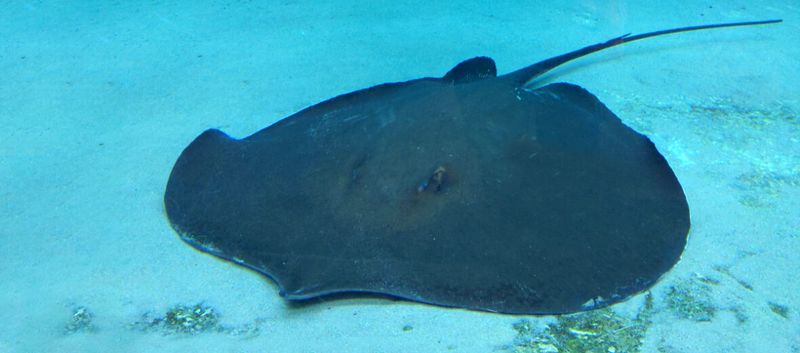
The Giant Freshwater Whipray is a rare and fascinating predator, found in Southeast Asia’s river systems. With a wingspan that can exceed 15 feet, it is one of the largest freshwater fish in the world. Its long, whip-like tail and smooth, flat body make it a master of camouflage on the riverbed. It feeds on crustaceans and small fish, using its powerful suction to capture prey. This enigmatic creature is a symbol of the rich biodiversity found in these waters. Conservation efforts are crucial to ensure its survival amidst habitat threats.
Black Caiman

The largest predator in the Amazon, the Black Caiman, is both feared and revered. With a length exceeding 16 feet, this reptile is apex in its domain. Its dark, scaly skin provides perfect camouflage in murky waters, where it hunts fish, mammals, and birds. Despite its fearsome reputation, the Black Caiman plays a vital role in maintaining the ecological balance. It is a powerful symbol of the Amazon’s untamed wilderness, a reminder of nature’s raw power and beauty. Efforts to protect this species are ongoing, ensuring its place in the ecosystem.
Beluga Sturgeon

The Beluga Sturgeon is a giant of freshwater and brackish waters, residing mainly in the Caspian and Black Seas. It can live for over a century and grow to lengths exceeding 20 feet. Known for producing the world-famous beluga caviar, this fish is both a predator and a coveted resource. Its diet includes fish and invertebrates, maintaining a crucial position in the aquatic food chain. Conservation efforts are vital for its survival, as overfishing and habitat loss threaten its existence. This majestic fish is a testament to the planet’s aquatic diversity.

